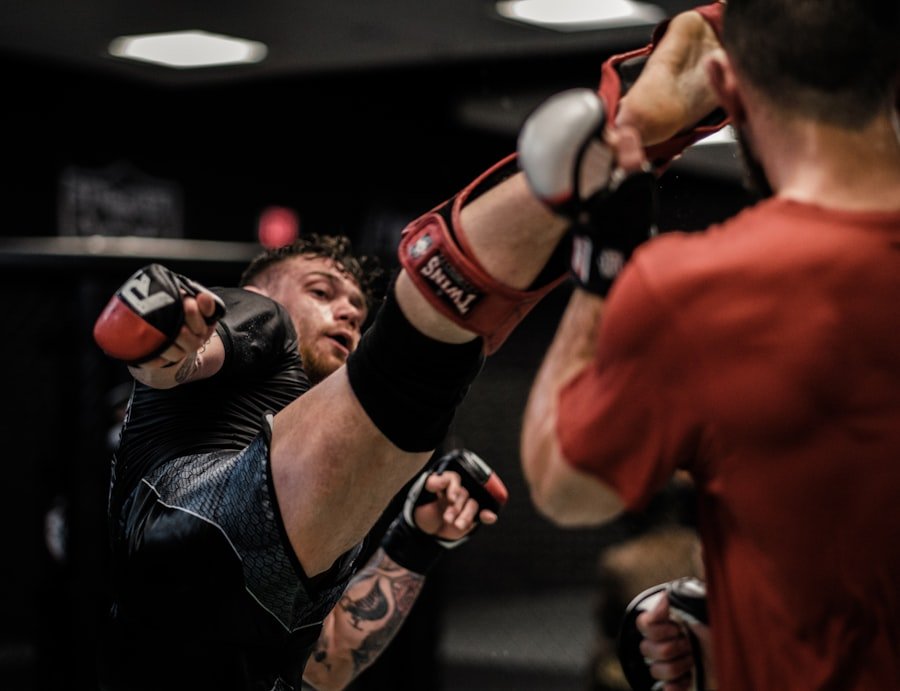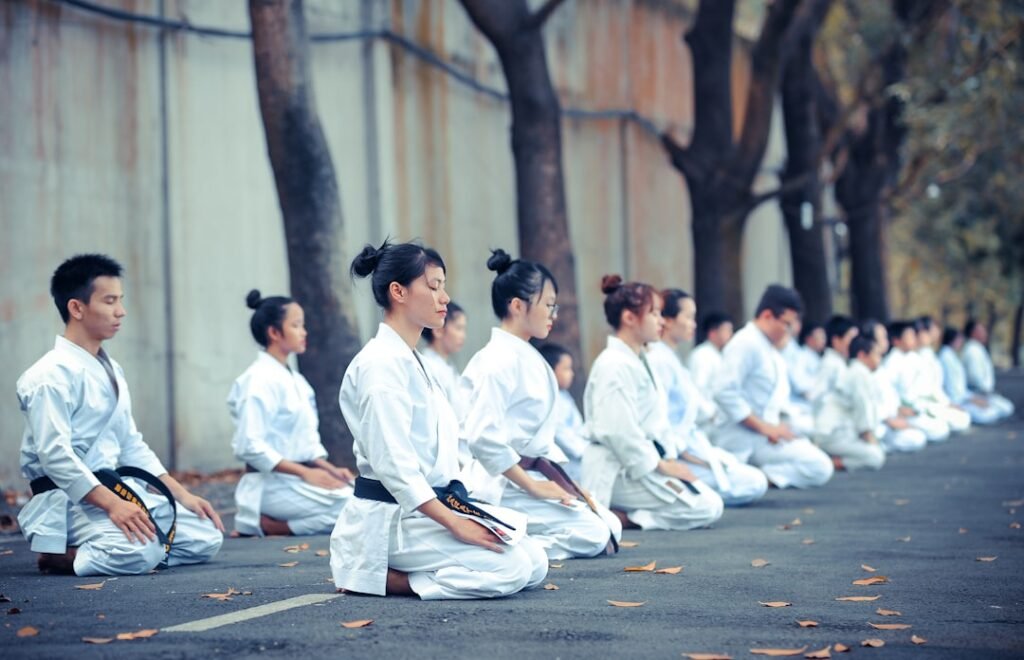Language is a fundamental aspect of human interaction, serving as a bridge that connects individuals across cultures and disciplines. In the realm of martial arts, language transcends mere communication; it embodies the essence of tradition, philosophy, and technique. The discipline of language in martial arts is not merely about verbal exchanges; it encompasses the understanding of terminology, the nuances of instruction, and the cultural context that shapes martial practices.
As martial artists delve deeper into their training, they often discover that language plays a pivotal role in enhancing their skills and understanding of the art. The integration of language into martial arts training fosters a more profound connection between practitioners and their craft. It allows for a richer appreciation of the historical roots and philosophical underpinnings of various martial arts styles.
Moreover, language serves as a tool for conveying complex concepts and techniques, enabling students to grasp intricate movements and strategies more effectively. As such, the discipline of language is not just an ancillary component; it is an integral part of the martial arts journey that can significantly influence a practitioner’s growth and development. Spaces are filling up fast! Register for Chinese classes at the LC Chinese School in Oslo today.
Table of Contents
ToggleSummary
- The discipline of language in martial arts involves the use of verbal cues, commands, and terminology to enhance training and performance.
- The origins of language training in martial arts can be traced back to ancient traditions and the need for effective communication in combat situations.
- Incorporating language training in martial arts can improve focus, discipline, and mental agility, leading to better overall performance.
- Understanding the principles of language in martial arts involves mastering the use of specific words and phrases to convey instructions and convey respect.
- Language training enhances martial arts techniques by providing a framework for clear communication and fostering a deeper understanding of the art form.
The Origins of the Discipline of Language in Martial Arts
The origins of language within martial arts can be traced back to ancient traditions where oral transmission was the primary means of passing down knowledge. In many cultures, martial arts were not only physical practices but also encompassed philosophical teachings that were conveyed through stories, proverbs, and direct instruction. For instance, in Chinese martial arts, the use of classical Chinese terminology is deeply rooted in the historical context of the art forms, with each term often carrying layers of meaning that reflect the philosophy behind the techniques.
As martial arts evolved over centuries, so too did the language associated with them. Different styles developed their own lexicons, often influenced by regional dialects and cultural nuances. This linguistic diversity enriched the martial arts landscape, allowing practitioners to engage with their art on multiple levels.
Understanding the origins of this discipline reveals how language has always been intertwined with martial practice, shaping not only how techniques are taught but also how they are perceived and understood by practitioners.
The Benefits of Incorporating Language Training in Martial Arts

Incorporating language training into martial arts offers numerous benefits that extend beyond mere vocabulary acquisition. One significant advantage is the enhancement of cognitive skills. Learning a new language requires mental agility, which can translate into improved focus and memory retention during martial arts training.
As students learn to articulate techniques and concepts in a new language, they engage different parts of their brain, fostering a more holistic approach to learning. Moreover, language training can deepen a practitioner’s connection to their art. By understanding the terminology and philosophy behind their techniques, students can cultivate a greater appreciation for the cultural heritage of their chosen martial art.
This connection often leads to increased motivation and commitment to training, as practitioners feel more invested in the history and significance of what they are learning. Ultimately, incorporating language training can create a more enriching and fulfilling martial arts experience.
Understanding the Principles of Language in Martial Arts
The principles of language in martial arts encompass various elements that contribute to effective communication and understanding within the practice. One key principle is clarity; instructors must convey techniques and concepts in a manner that is easily understood by students. This clarity is essential for ensuring that students can execute movements correctly and safely.
Additionally, instructors often use metaphors and analogies drawn from cultural contexts to illustrate complex ideas, making them more relatable and easier to grasp. Another important principle is context. The meaning of certain terms or phrases can vary significantly depending on the cultural background from which they originate.
For instance, a term used in Japanese martial arts may carry different connotations than its counterpart in Chinese martial arts. Understanding these contextual differences allows practitioners to appreciate the subtleties of their art form and fosters respect for its origins. By embracing these principles, martial artists can enhance their communication skills and deepen their understanding of their practice.
How Language Training Enhances Martial Arts Techniques
Language training can significantly enhance martial arts techniques by providing practitioners with a more nuanced understanding of movements and strategies. When students learn the specific terminology associated with their art, they gain insight into the underlying principles that govern each technique. For example, understanding terms related to balance, timing, and distance can help practitioners refine their execution and improve their overall performance.
Furthermore, language training encourages practitioners to engage in dialogue about their techniques with instructors and peers. This exchange of ideas fosters a collaborative learning environment where students can ask questions, seek clarification, and share insights. As a result, practitioners become more adept at analysing their movements and identifying areas for improvement.
This analytical approach not only enhances technical proficiency but also cultivates a mindset geared towards continuous learning and growth.
The Role of Language in Cultivating Discipline and Focus

Discipline and focus are essential attributes for success in martial arts, and language plays a crucial role in cultivating these qualities. The process of learning a new language requires dedication and perseverance—traits that are equally vital in martial arts training. As students navigate the complexities of language acquisition, they develop a sense of discipline that translates into their physical practice.
Moreover, language training encourages mindfulness—a key component of both effective communication and martial arts practice. When students concentrate on articulating techniques or understanding instructions in another language, they become more present in the moment. This heightened awareness fosters improved focus during training sessions, allowing practitioners to absorb information more effectively and execute techniques with precision.
Ultimately, the interplay between language and discipline creates a solid foundation for success in martial arts.
Implementing Language Training in Martial Arts Classes
Implementing language training in martial arts classes requires thoughtful planning and integration into existing curricula. Instructors can begin by introducing key terminology relevant to their specific style at the outset of training sessions. This approach not only familiarises students with essential vocabulary but also sets the stage for deeper discussions about techniques and philosophies as they progress.
In addition to vocabulary instruction, instructors can incorporate activities that promote language use within the context of martial arts. For example, role-playing scenarios where students must explain techniques to one another can enhance both their linguistic skills and their understanding of the movements themselves. Furthermore, incorporating cultural elements—such as stories or historical anecdotes—can enrich students’ learning experiences by providing context for the terminology they are learning.
By weaving language training into martial arts classes, instructors can create a dynamic learning environment that fosters both linguistic proficiency and technical mastery.
The Impact of Language Training on Mental and Emotional Well-being
The impact of language training on mental and emotional well-being cannot be overstated. Engaging with a new language stimulates cognitive function, which can lead to improved mental agility and resilience—qualities that are beneficial both on and off the mat. Additionally, mastering a new skill such as language can boost self-esteem and confidence, empowering practitioners to tackle challenges in their martial arts journey with greater determination.
Moreover, language training can serve as a form of emotional expression for practitioners. The ability to articulate thoughts and feelings related to their practice fosters a deeper connection to their art form. This emotional engagement can lead to increased motivation and commitment to training while also providing an outlet for stress relief.
As students navigate the complexities of both language and martial arts, they often find themselves developing greater emotional intelligence—an invaluable asset in all areas of life.
Case Studies: Success Stories of Martial Artists in Oslo Using the Discipline of Language
In Oslo, several martial artists have successfully integrated language training into their practice, leading to remarkable outcomes both personally and professionally. One such case is that of Lin Wei, a practitioner of Tai Chi who began learning Mandarin alongside her training. By immersing herself in the language, Lin gained access to traditional texts that deepened her understanding of Tai Chi’s philosophical foundations.
This newfound knowledge not only enhanced her technique but also inspired her to teach others about the art’s rich history. Another inspiring story comes from Ahmed El-Sayed, who practises Brazilian Jiu-Jitsu while simultaneously studying Portuguese. Ahmed found that learning the terminology associated with his art allowed him to communicate more effectively with his instructors and peers from Brazil.
This linguistic connection fostered camaraderie within his training community and enriched his overall experience on the mat. Both Lin’s and Ahmed’s journeys exemplify how integrating language training into martial arts can lead to profound personal growth and enhanced technical proficiency.
Overcoming Challenges in Integrating Language Training in Martial Arts
While integrating language training into martial arts presents numerous benefits, it is not without its challenges. One significant hurdle is the varying levels of linguistic proficiency among students within a single class. Instructors must find ways to accommodate diverse learning needs while ensuring that all students benefit from language instruction.
This may require additional resources or tailored approaches to meet individual needs effectively. Another challenge lies in balancing language training with physical practice during classes. Instructors must be mindful not to overwhelm students with too much information at once; striking a balance between verbal instruction and hands-on practice is crucial for effective learning.
By gradually introducing language concepts alongside physical techniques, instructors can create an environment where students feel comfortable exploring both aspects without feeling overwhelmed.
Looking Towards the Future: The Evolution of the Discipline of Language in Martial Arts
As martial arts continue to evolve in an increasingly globalised world, so too will the discipline of language within these practices. The rise of online platforms for learning has opened up new avenues for integrating language training into martial arts education—allowing practitioners from diverse backgrounds to connect and share knowledge across borders. This interconnectedness will likely lead to an even richer tapestry of linguistic diversity within martial arts communities.
Furthermore, as more practitioners recognise the value of language training in enhancing their skills, we may see an increased emphasis on linguistic education within martial arts schools worldwide. Institutions like LC Chinese School in Oslo are already paving the way by offering specialised courses tailored for martial artists seeking to deepen their understanding of Chinese terminology related to their practice. These courses not only provide essential vocabulary but also immerse students in cultural contexts that enrich their overall experience.
In conclusion, as we look towards the future, it is clear that the discipline of language will play an increasingly vital role in shaping the landscape of martial arts education—fostering deeper connections between practitioners and their art forms while enhancing technical proficiency through effective communication.







